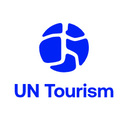Slowdown in Tourism Growth Reflects Current Uncertainties
London, UK/Madrid, Spain -- The latest edition of the UNWTO World Tourism Barometer confirms the rapid slowdown of international tourism growth since mid-2008, reflecting the impact of rising oil prices at the beginning of the year and the deterioration of the economic situation, as well as of consumer confidence, in recent months. Overall growth for 2008, however, is still projected at around 2%, building on the strong results of the first five months. UNWTO’s “Resilience Committee” will support its Members with accurate economic analysis and response mechanisms. The tourism sector’s effective response to the economic downturn will be discussed at the Global Ministers’ Summit at World Travel Market (London, UK, 11 November). A series of regional response groups will follow, starting in the Middle East (Sharm el Sheikh, Egypt, 23-24 November).
After a sound start to the year (international tourist arrivals worldwide averaged 5.7% from January-April), growth fell below 2% in June, July and August as the high price of oil and rising inflation took their toll and, together with recession fears, squeezed travel budgets. For the first eight months of 2008, growth averaged 3.7% compared with the same period in 2007, while for the year as a whole it is now projected to be around 2% globally.
As the current troubled economic scenario is expected to continue into 2009, UNWTO’s initial forecast for next year is for an even more modest performance.
Asia and the Pacific was the region whose growth has deteriorated most rapidly so far, after 18 consecutive months of sustained growth, declining from March onwards and even sliding into negative growth in August.
Growth in Europe also stagnated over the northern hemisphere summer months. The Americas, Africa and the Middle East weakened as well, but the slowdown was much less pronounced.
Within the regions
Although regional trends may vary as new data becomes available, the Barometer identifies the following regional trends:
- Europe currently stands at +2% for the first eight months of 2008 (well down from the 5% growth of the last two years), and the slowdown has not spared any of its four subregions.
- Asia and the Pacific’s growth (+4%) is also well behind its 2007 level, with Oceania and North-East Asia suffering the brunt of the downturn in demand.
- The Americas has so far performed better than in 2007 with +6% through the first eight months. The region appears to have only experienced a modest slowdown in July and August.
- The Middle East is once again the star performer in 2008 so far, with growth for the period January through August estimated at 17%. Data is still limited, though, which may lead to the need for a revision of this estimate.
- Africa’s growth is currently running at less than half the level achieved in 2007, largely thanks to North Africa’s strong performance since the average growth in Subsaharan Africa has fallen significantly over its 2007 level.
Prospects
Including the month of August, 23 million additional arrivals have been counted in 2008 so far, bringing the total to 642 million international tourist arrivals. But much of the growth for the period January-August reflects the situation before the beginning of the slowdown – a steady increase worldwide, which even reached 7% in May. The growth in international tourist arrivals fell to less than 2% in June, and to just 1% in the peak travel months of July and August, highlighting the time when energy prices, inflation and the credit crunch started to have a real impact on travel and tourism demand.
The economic downturn, combined with the current uncertainties, extreme market volatility and a decline in both consumer and business confidence, are expected to continue taking their toll on demand for tourism – at least in the short to medium term:
- Many businesses are expected to retrench, and any such retrenchment will be quickly felt in consumer markets.
Given the current stress on many companies’ balance sheets, business travel is also expected to be more adversely impacted than the leisure segment. - Unlike previous crises such as with 9/11 and SARS, the current downturn does not affect the desire to travel. The major concern is about whether one can afford to travel, or whether one wants to spend money on travel given the uncertain economic situation.
So far international tourism has resisted the downturn better than other economic sectors such as construction, real estate or car manufacturing. As in previous crisis situations:
- Travel to destinations closer to home, including domestic travel, is expected to be preferred to long-haul travel;
- Segments such as visiting friends and relatives (VFR), repeat visitors, as well as special interest and independent travellers are expected to be more resilient;
- The decline in average length of stay, as well as in expenditure, is projected to be more pronounced than the fall in arrivals;
- Destinations offering value for money and with favourable exchange rates have an advantage as price becomes a key issue;
-
Companies will, and should, concentrate on containment of cost in order to keep their competitive edge;
It is more necessary than ever to work closely together in the tourism value chain – i.e. the public with the private sector, and destinations with the travel trade.
The Barometer stresses that the anticipated softening of international tourism growth in 2008, and again in 2009, follows four historically strong years. Between 2004 and 2007 international tourist arrivals grew at the extraordinary rate of 7% a year, well above the 4% long-term average.
A detailed forecast for 2008 and 2009 for the world and by region is included in the current issue of the UNWTO World Tourism Barometer.
Marcelo Risi
+34 91-567-8178 /8100
UN Tourism
